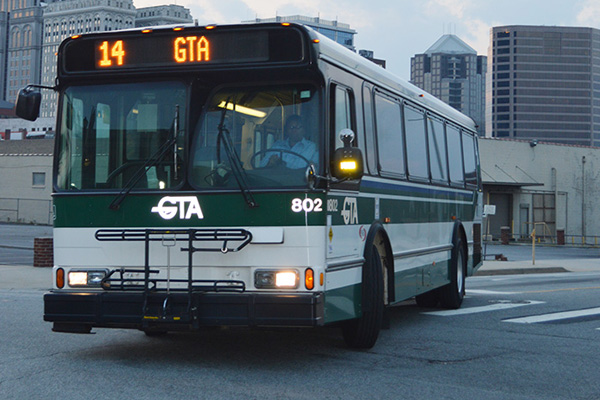The Greensboro Transit Authority (GTA) that oversees the city bus system was abolished by a unanimous vote of the Greensboro City Council at the Tuesday, April 16 meeting.
It sounds momentous, but it wasn’t. Which is fortunate because not only was their little public discussion evidently the plan wasn’t even shared with the entire City Council.
When the motion was made to abolish the GTA, Councilmember Yvonne Johnson said, “This is the first I’ve heard of this.”
After abolishing the GTA, the City Council voted to establish a Greensboro Transit Advisory Commission (GTAC), which will function in a similar capacity to the old GTA. However, legally there is a huge difference between an “authority” and an “advisory commission.”
The old GTA didn’t operate as an authority but legally had the power to do so. According to the ordinance establishing the GTA, that has now been repealed, the GTA had the power to sue and be sued, to prepare a budget, to retain private consultants, to buy facilities and equipment, to enter into contracts, to set bus routes and fares, and to order city staff to preform tasks.
The GTA didn’t function like that, it functioned more like the advisory commission that has now replaced it, but the power for the GTA to do so was in the ordinance.
Mayor Nancy Vaughan said, “I do think that in some ways that board has gone rogue. In that they are giving staff assignments. It is not up to board members to give staff assignments.”
Vaughan is correct going forward, but according to the ordinance that established the now defunct GTA, that board had every right to give staff assignments.
The whole abolishment of the GTA and establishment of the new GTAC doesn’t make much sense, unless you read a memo from Greensboro Department of Transportation Director Adam Fischer to Greensboro City Manager David Parrish. It’s a public document and Parrish provided a copy as soon as he was asked, but in the past some member of the City Council would have felt the need to explain what the City Council was doing to the public or even going so far as insist that the Council have a public discussion of what the it planned to do.
Fischer explains in the memo that the GTA was set up when Greensboro took over the city bus system from Duke Power in 1990. At that time the employees of Duke Power operating the bus system were unionized and as part of the agreement between Duke Power and Greensboro were allowed to remain unionized. North Carolina state law prohibits a municipality from contracting with a union, so the GTA was set up as a separate authority to run the bus system and contract with the union.
However, as Fischer explains it was determined that the city could hire an independent contractor to deal with the unionized bus drivers without giving up the power to run the bus system and that was what was done.
So while the GTA had a vast amount of power on paper, it did not exercise that power and has functioned for the past 30 years more as an advisory commission.
In essence what the City Council did was clean up some legal issues that should have been cleaned up nearly 30 years ago.
It all makes sense, when you have the facts but even at least one member of the City Council was in the dark about what was really happening. During elections candidates talk about the need to be transparent, this GTA to GTAC transition was about as opaque as you can get.
And a historical note here for those wondering why Duke Power used to run the Greensboro bus system. It’s because the transit system started out with trolleys that were powered by electrical lines over the trolley tracks. The system still run by Duke Power then went to electric buses, and then to diesel buses that didn’t need to have electric lines to operate.
Now Greensboro is going back to electric buses, battery powered electric buses, but electric buses all the same.
Who knows trolleys might be next.

